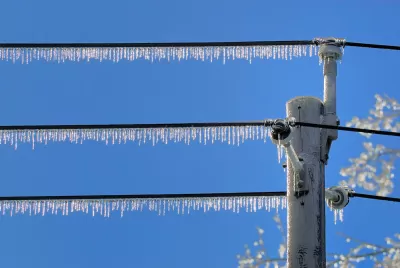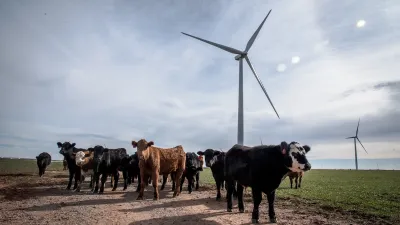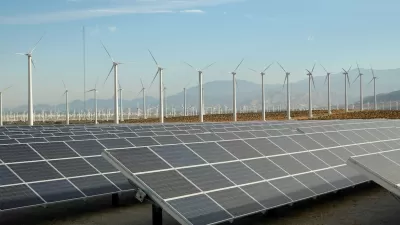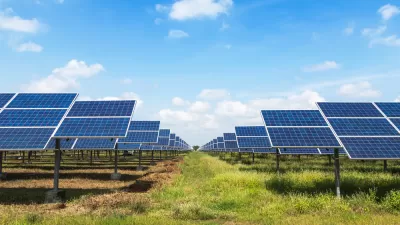Efforts made to prepare the state’s infrastructure for winter storms after 2021’s disastrous freeze are paying off.

After a 2021 winter storm knocked out power across Texas and led to some 240 deaths, residents were relieved to see the lights stay on as temperatures dropped last week. Writing in the New York Times, Dionne Searcey describes how a mix of fuels and energy sources, as well as infrastructure improvements, kept the lights on.
In 2021, despite rumors that frozen wind turbines were to blame for the outages, “it was frozen natural gas plants that were the main problem.” Now, efforts to weatherize pipes and equipment for natural gas and other energy sources have yielded positive results as the grid held up to demand. “In Texas, winds die down in winter and aren’t expected to contribute as much to the energy mix as in the summer, energy experts say. On Monday, for instance, wind at its highest-performing level of the day was about 28 percent of the energy mix, compared with gas at about 48 percent.”
For now, natural gas still serves as a backup for wind and solar in Texas. But renewables play their own role in reducing overall energy consumption and the need for natural gas. “Last summer, for instance, wind and solar energy propped up Texas during an intense heat wave,” when natural gas plants don’t perform as well.
FULL STORY: How Texas Kept the Lights On in the Recent Deep Freeze

Planetizen Federal Action Tracker
A weekly monitor of how Trump’s orders and actions are impacting planners and planning in America.

Congressman Proposes Bill to Rename DC Metro “Trump Train”
The Make Autorail Great Again Act would withhold federal funding to the system until the Washington Metropolitan Area Transit Authority (WMATA), rebrands as the Washington Metropolitan Authority for Greater Access (WMAGA).

The Simple Legislative Tool Transforming Vacant Downtowns
In California, Michigan and Georgia, an easy win is bringing dollars — and delight — back to city centers.

The States Losing Rural Delivery Rooms at an Alarming Pace
In some states, as few as 9% of rural hospitals still deliver babies. As a result, rising pre-term births, no adequate pre-term care and harrowing close calls are a growing reality.

The Small South Asian Republic Going all in on EVs
Thanks to one simple policy change less than five years ago, 65% of new cars in this Himalayan country are now electric.

DC Backpedals on Bike Lane Protection, Swaps Barriers for Paint
Citing aesthetic concerns, the city is removing the concrete barriers and flexposts that once separated Arizona Avenue cyclists from motor vehicles.
Urban Design for Planners 1: Software Tools
This six-course series explores essential urban design concepts using open source software and equips planners with the tools they need to participate fully in the urban design process.
Planning for Universal Design
Learn the tools for implementing Universal Design in planning regulations.
Smith Gee Studio
City of Charlotte
City of Camden Redevelopment Agency
City of Astoria
Transportation Research & Education Center (TREC) at Portland State University
US High Speed Rail Association
City of Camden Redevelopment Agency
Municipality of Princeton (NJ)





























